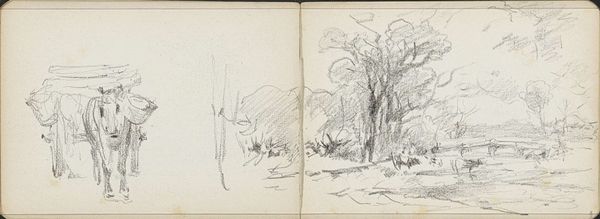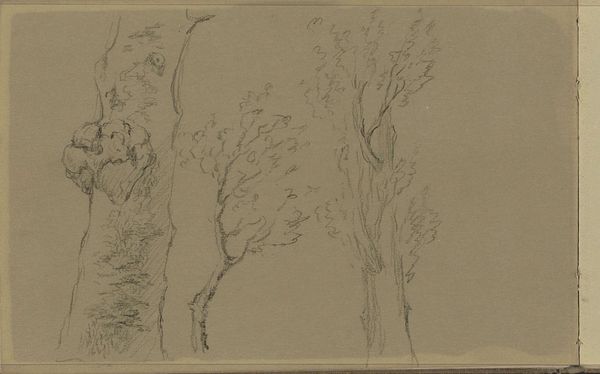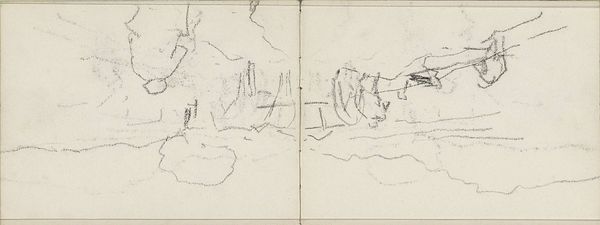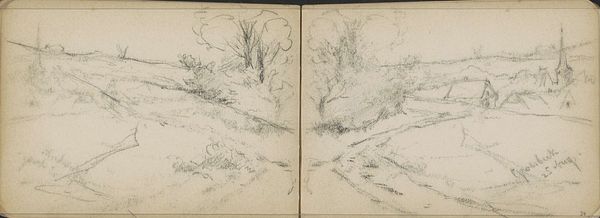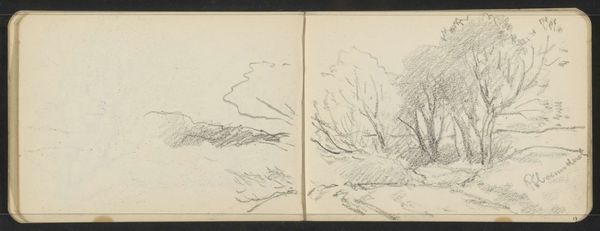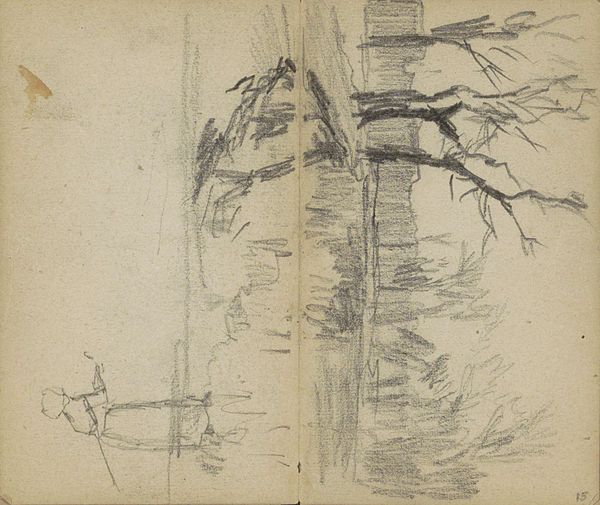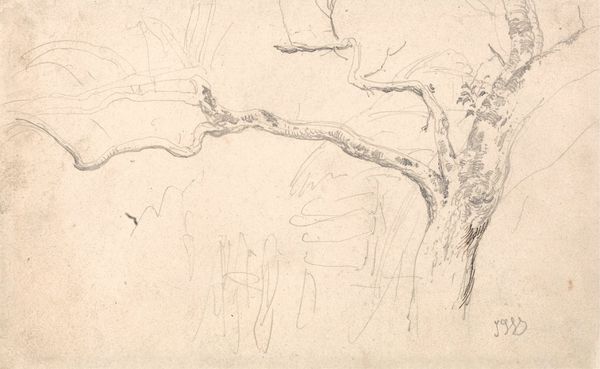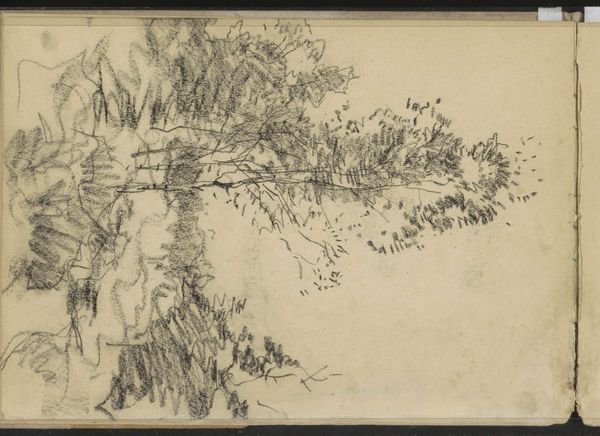
drawing, plein-air, pencil
#
drawing
#
plein-air
#
landscape
#
pencil
#
realism
Dimensions: height 158 mm, width 247 mm
Copyright: Rijks Museum: Open Domain
Curator: Willem Cornelis Rip's pencil drawing, "Overhellende bomen langs een waterkant"—"Leaning Trees by a Waterfront"—from 1876 or 1877, presents a dual landscape sketch within the pages of what looks like a field notebook. What catches your eye about this work? Editor: It's moody, isn't it? Despite being a simple sketch, there's a weight to the branches, almost sorrowful in their downward reach. You sense the stillness of the water and the quiet of the place. It's elemental, you know, air and water, the bare bones of a scene. Curator: Yes, and Rip's commitment to plein-air drawing really shines through here. It exemplifies the Realist movement's interest in depicting unvarnished nature. He isn't just copying a scene; he’s capturing a moment, a specific quality of light, the very character of those trees. Editor: I see what you mean. Look at the economy of line; there's such precision in suggesting the texture of bark, the play of light through the leaves. But beyond mere representation, there's a sensitivity to the composition, especially between the two pages of the notebook. One has the structural tree, and the second complements the structural work by placing an implied focal point, a hidden dock overhanging water. There is something secretive implied at that point; its purpose remains as ambiguous as the location's, as well as the reasons the Artist found that spot inspiring in its loneliness. Curator: Precisely! The diptych nature encourages us to read it as a unified whole, where negative space around the structural branches invites the scene on the right to act as an evocative answer. It invites us to ponder the relationship between different spatial arrangements; one structured in nature, one hinting to possible future architecture. There is an implied dialogue in nature's form, hinting at a third space to join in this debate, Man's form. Editor: It's a thoughtful drawing; it stays with you. Curator: For me, it resonates as an ode to observation and how we might observe forms around us in a dialogue between the structural, our mind's, and of a form of expression of a natural force; it can lead to insightful expressions in both parties, leading to more creations!
Comments
No comments
Be the first to comment and join the conversation on the ultimate creative platform.

